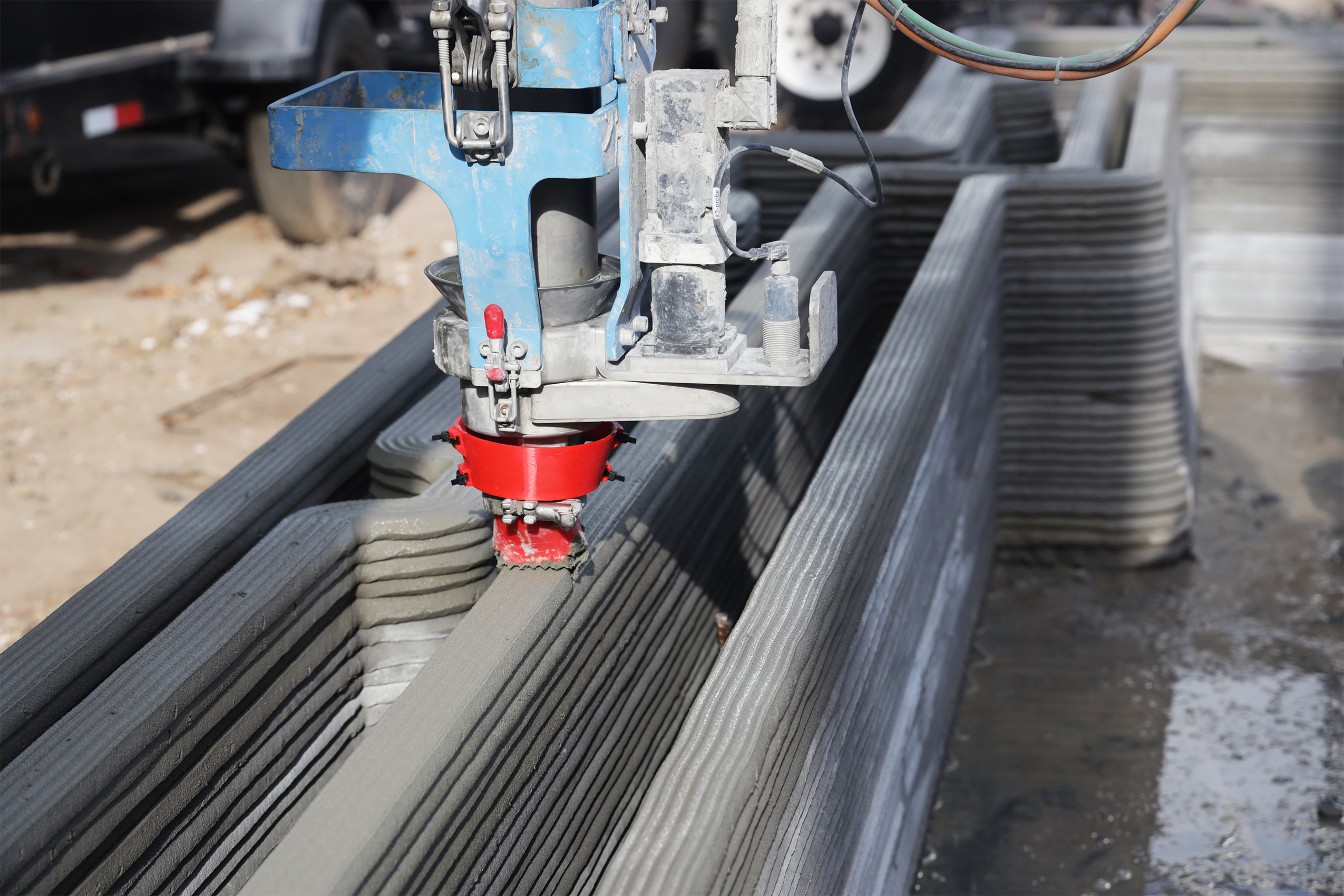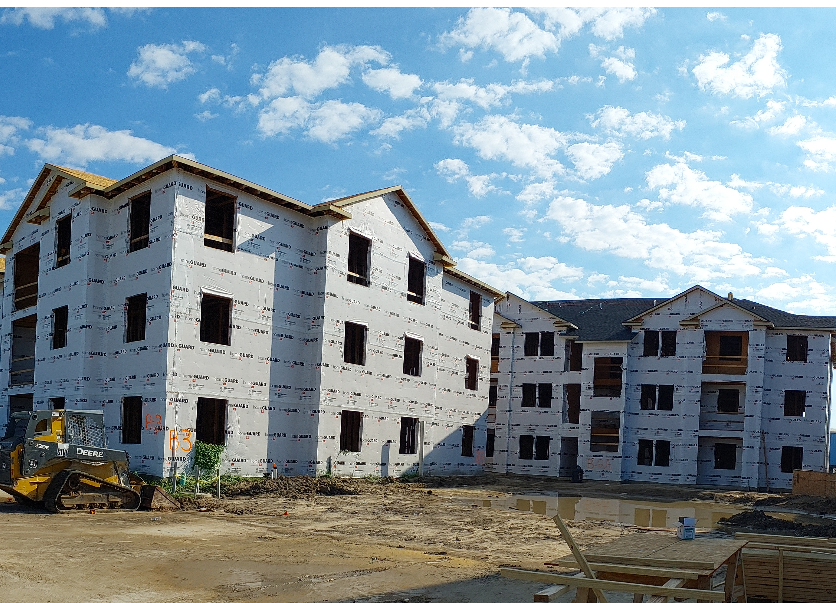 Much of the rising material costs has been attributed to demand fluctuations during and after the COVID-19 pandemic coupled with rising inflation rates. Some reports indicate that steel prices have more than doubled since March of 2020. Closely linked to the price of steel, as it is an essential ingredient, is the price of iron. Although the price of iron briefly began to soften in late 2021, since then it has seen drastic price hikes. This compounded with the over 20% gypsum price increase has not only made the cost of new construction rise but has also affected the cost of renovations which can have significant impacts on the already struggling housing market.
Much of the rising material costs has been attributed to demand fluctuations during and after the COVID-19 pandemic coupled with rising inflation rates. Some reports indicate that steel prices have more than doubled since March of 2020. Closely linked to the price of steel, as it is an essential ingredient, is the price of iron. Although the price of iron briefly began to soften in late 2021, since then it has seen drastic price hikes. This compounded with the over 20% gypsum price increase has not only made the cost of new construction rise but has also affected the cost of renovations which can have significant impacts on the already struggling housing market.
How does this Affect the Construction Sector?
This has negative effects on many aspects of the construction sector.
- Production Costs: Increased material costs mean increased project expenses. Because raw materials are the backbone of construction, when these prices rise the cost of nearly everything in the construction industry rises. Additionally, it can cause disruptions in the construction process given that material costs are factored directly in the project budget. Budget overruns due to substantial increases in material costs can result in prolonged delays and in extreme cases, project abandonment.
- Supply Chain Disruptions: The saying goes “a chain is only as strong as its weakest link”. This is true for both literal chains and the supply chain. The COVID-19 pandemic had significant impacts on global supply chains. While the construction sector is fighting to return to pre-pandemic norms, it appears that the global economy has undergone some long-term changes as a result. Rising material and production prices caused by any factor can cause delays in material production, material procurement, and material distribution which influences the entire supply chain. Just like budget alterations, this can cause project delays and in extreme cases project abandonment.
- Inflation: While inflation is a natural occurrence for economies, it becomes dangerous when it increases at too high a rate, too fast. This is known as hyperinflation and comes with a slew of detrimental consequences. When wages don’t increase along with inflation, nearly every contributor to the economic system suffers. This includes individuals as well as entities and sectors. Also, as mentioned previously, when the price of raw materials rises, it inflates the price of finished projects such as homes, commercial buildings, infrastructure, and everything in between. Not only will the production cost increase, but the purchasing price and rental costs will increase, which has a direct effect on the price of living.
- Price of Labor: With the increased cost of living comes a demand for higher wages. While this is an expected consequence of rising inflation, high inflation rates can disrupt the natural economic adjustment causing a disconnect between wages and the price of living. This can negatively affect the availability of labor and skilled labor. This, combined with the ever prevalent skilled labor shortage contributes heavily toward the rising labor costs in the construction sector.
- Interest Rates: Interest rates are present in a variety of transactions in the construction sector on both the supply and demand side. Higher material costs make financing construction projects more expensive and therefore often more difficult. This can result in construction companies needing to increase borrowing to cover unexpected or rising costs, which is also made more expensive by higher interest rates. Higher interest rates can mean more earnest money down and/or additional collateral is required to secure a construction loan. With this in mind, many projects have stalled as developers seek additional investors to provide the necessary backing for financing approval. Interest rates also make purchasing homes and other structures such as commercial buildings more expensive for the consumer. This also has an impact on mortgage rates.
- Project Feasibility: Feasibilities studies are studies that typically occur after a project is pitched but before it is implemented. These studies are designed to ensure that the proposed project is feasible (“makes sense”) practically and financially. If a proposed project does not pass its feasibility study, it is either altered or dismissed. Rising interest rates and higher material costs can make projects that were previously or would have previously been deemed feasible unfeasible as the ROI factors lean towards longer lead times to profitability. When you put extended ROI times and higher interest rates together, the project can make sense logistically and practically but be financially detrimental.
- Government Policies: Material prices can impact government policies such as tariffs on imported goods just like government policies can impact material prices. These policies can have a positive or negative impact depending on when they are implemented, why they are implemented, and how they are intended to function.
- Economic Impact: Just like with other major industries, the construction sector is often subject to the volatility of the global and domestic economy. But because of the vastness of the construction sector the domestic economy in particular is also subject to the volatility of the construction sector. This means the rising construction material prices can, and does, affect other aspects of the domestic economy. As mentioned previously, this includes the price of living, the housing market, the renter’s market, mortgage and interest rates, as well as many others.
What can be done?
Many are looking to combat the rising price of traditional construction materials such as steel, lumber, and concrete by utilizing alternative materials. For example:
- Fly Ash: Fly ash is a byproduct of coal combustion that is often disregarded as waste. However, it can be used as a substitute in Portland Cement Concrete (PCC). Portland cement is the most commonly used commercial cement and is used to make a variety of common construction materials such as concrete, stucco, and mortar. Adding fly ash has the potential to not only reduce costs but it also comes with many benefits. Portland concrete made with fly ash has been shown to have improved workability, increased strength, and the formula requires less water than traditional concrete.
- Straw Bales: Gaining popularity in recent years for their affordability and sustainability, straw bales can be utilized in place of traditional framing or concrete. They are also energy efficient and provide good thermal and acoustic insulation. However, straw bale construction does face challenges that traditional construction materials may not including but not limited to moisture management, adherence to building codes and regulations, structural and design limitations, and fire safety concerns.
- Bamboo: Bamboo has many uses in construction such as for flooring, paneling, and structural elements on top of being a fast-growing and renewable resource. Although it is a strong, flexible, and adaptable construction material it may not offer all the benefits of traditional materials such as lumber, concrete, and steel.
 These materials have the dual benefits of reducing production costs and contributing to more sustainable and environmentally friendly construction practices.
These materials have the dual benefits of reducing production costs and contributing to more sustainable and environmentally friendly construction practices.
Making these material swaps can help reduce overall construction costs; however, this is most effective when done in tandem with other cost reducing strategies. Such as:
- Anticipate Price Increases: The Building Cost Index (BCI), Construction Cost Index (CCI), or Turner Cost Index (TCI) are all tools that can aid help to forecast and account for material price escalations in your bids. Utilizing the historical data and trend analysis provided by these sources can result in more accurate material cost predictions and therefore more accurate budgets and bids.
- Seek Overstocked Items: Just like when furniture shopping, you may be able find discounts and deals on construction materials by approaching suppliers for overstocked or discontinued items.
- Opt for Builder’s Grade Materials: For non-visible areas of a project, consider using builder’s-grade materials instead of premium options to cut costs without compromising structural integrity.
- Invest in Essential Tools: Although not necessarily cutting down on material costs, purchasing essential power tools is an investment that can save on rental fees in the long run, lowering overall production costs. This does put the responsibility of tool repairs on you or your company, it may save on long-term insurance and transportation costs as well.
- Hire Skilled Moonlighters: For small scale and home projects consider employing workers from large construction firms who take on side jobs, offering expertise at a lower cost, but ensure they have proper insurance and licenses. For non-commercial projects, this may be a more cost-effective alternative to hiring entire general contracting and sub-contracting teams
Conclusion
Remember that these strategies and swaps are not applicable to all projects but should be considered when trying to combat rising material prices. Innovations are being made every day in the construction sector to optimize material use and promote cost-effective and sustainable practices. While most of us in the construction sector can do little to decrease prices, fight inflation, or lower interest rates, we can implement and encourage new and innovative strategies to mitigate the negative impacts of these factors. The construction sector has a significant influence on both the global and domestic economy, affecting things such as the cost of living, labor prices, and the housing market. This means that how we adapt to changes such as rising material prices affects not only those of us who work in the construction sector but those outside of it as well.






